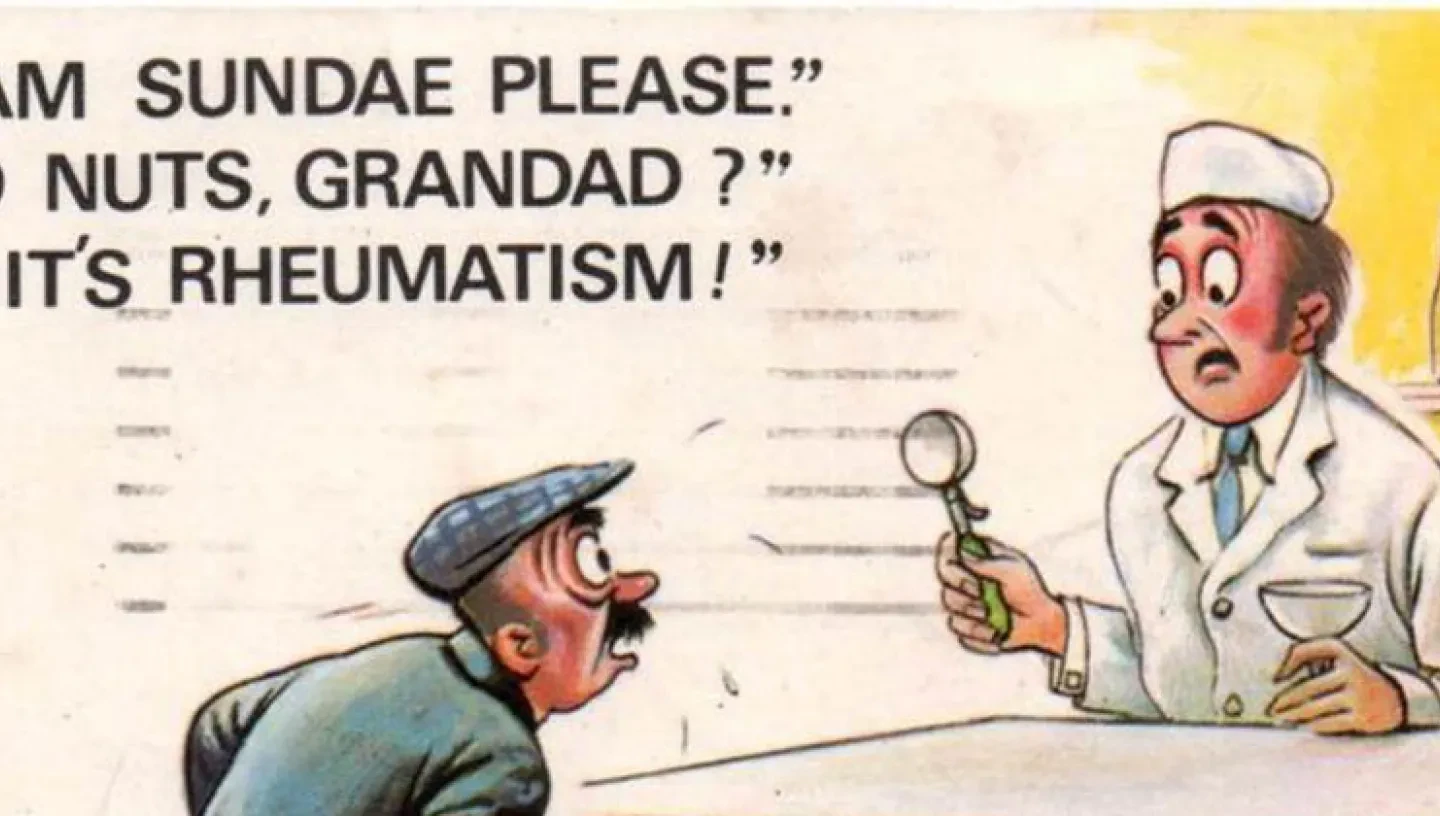
Publishing company Bamforth and Co. depicted the seaside in bright, often lewd postcards. Their cartoonish images became part of the quintessentially British experience, exploring the ridiculous side of the seaside and pushing humour to the limit of acceptability. The company made numerous court appearances during the 1950s - but how do we view these images today?
By Katina Bill
Humour at the seaside
Discover how photographers Tony Ray-Jones and Martin Parr capture the funny side of the British at the seaside.
1. A seaside catch
Bamforth and Co. started out as portrait photographers in 1870, when the fashion was to create a little scene in the studio with painted backdrop and props, so that sitters looked like they were walking through a country estate or admiring a beautiful lake. James Bamforth was highly adept at creating these scenes. Always a canny businessman, he saw how he could use this skill to jump on the seaside postcard bandwagon, even though he was based in the Pennine village of Holmfirth, over 50 miles from the sea. A painted coastal view, some sand and a few shells scattered on the floor and hey presto, a seaside postcard.

2. The place to make your hair curl
However clever James was at creating his seaside scenes, the scope for producing seaside postcards was always going to be limited in a Holmfirth photo studio. The company soon began to employ artists to create painted seaside scenes. And there were other benefits to painting rather than photographing people – especially young ladies – at the seaside. It was possible to get away with so much more – or rather, in terms of clothing, less – in a drawing than in a photograph. Before long, some very scantily clad young ladies were appearing, as in this card from about 1910.

3. Sunday papers
Artist-drawn cards made it possible to exaggerate the human form to great comic effect. Douglas Tempest was the first artist at Bamforth and Co. and he established an easily identifiable house style based on bright primary colours and exaggerated physical characteristics. His cast of characters included enormously fat men and women, weedy, red-nosed, hen-pecked husbands and buxom blonde bombshells. In this card, another favourite, the goofy, cross-eyed girl thinks she is a headline-worthy beauty.

4. Drying weather
The Bamforth artists were great observers of both human nature and everyday life. Whilst they are famous for exaggerated caricatures, they always set them against carefully observed detail from real life. In this way they manage to capture and record popular attitudes, concerns and aspirations which can tell us a lot about how people felt as well as lived. This card is typical of many that emphasise laundry, and the relief of leaving it behind for a week. This suggests that the weekly wash was a particularly arduous and unwelcome chore that loomed large in domestic life.

5. Crushed nuts
Bamforth’s success as a producer of saucy seaside postcards depended on pushing the boundaries of acceptability just so far, so they raised a titter of shocked amusement rather than a gasp of outrage. Getting the balance just right was crucial – not enough sauce and the card wouldn’t sell well, too much and a court appearance might ensue. Bamforth and Co. made numerous court appearances in the 1950s but the fact that they submitted all their designs to a censorship review board worked in their favour. Today we are more likely to be bemused by the cards that were singled out for censure as they are far from shocking to our eyes. This example, which featured in a court case in the 1970s, is far from obscene.

6. What more do you want?
If Bamforth were publishing their cards today the designs would not be in any danger of being charged with obscenity. They may, however, find themselves at the centre of a #metoo social media campaign. The cards are full of young women getting caught out by gusts of winds or failing knicker-elastic, under the watchful eye of leering men. The caption for this card design was ‘Holidays with pay and free entertainment – what more do you want?’

Katina Bill is the curator at Kirklees Museum and Galleries.
The Great British Seaside: Photography From The 1960s To The Present runs from March 23 to September 30 at the National Maritime Museum. Buy tickets